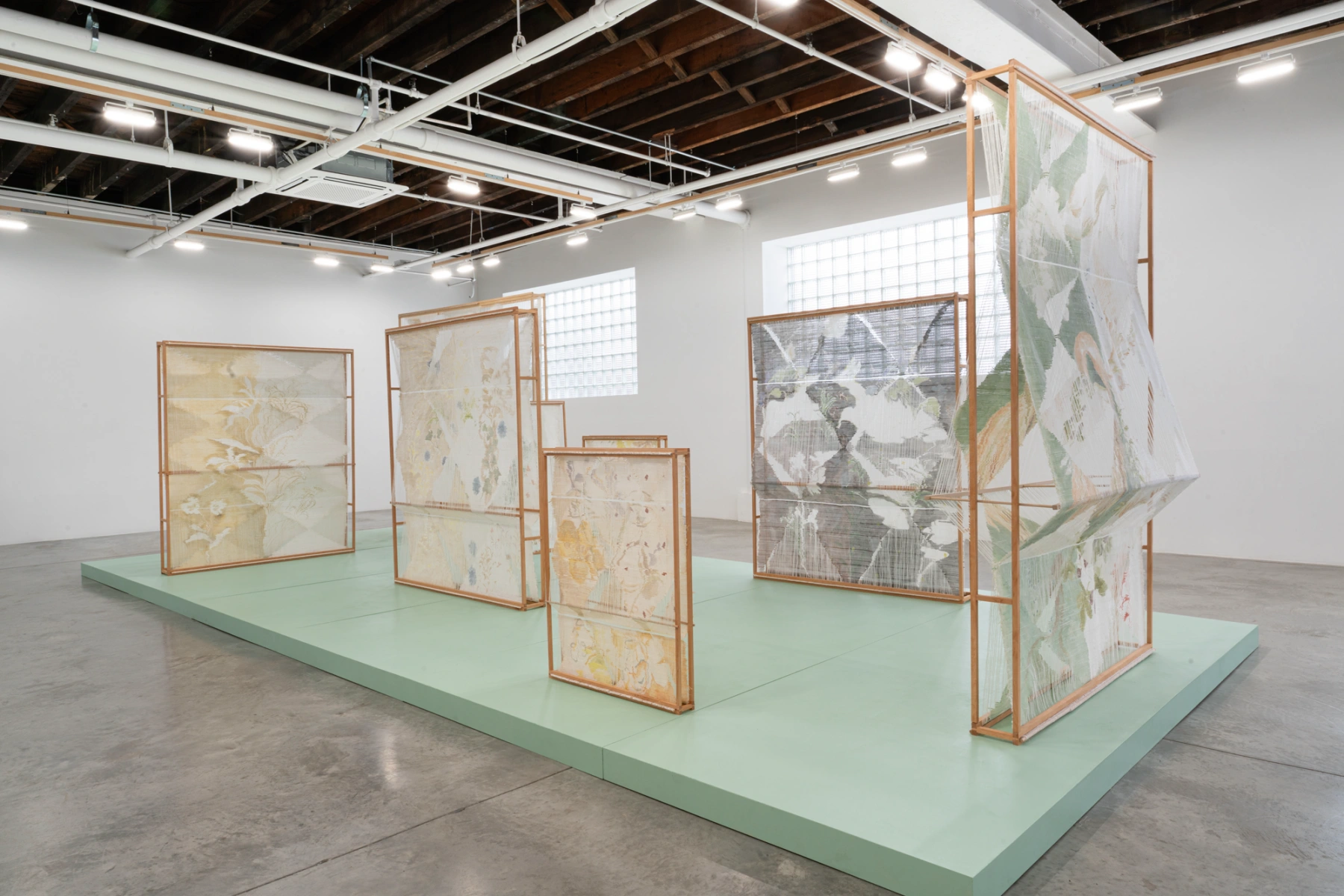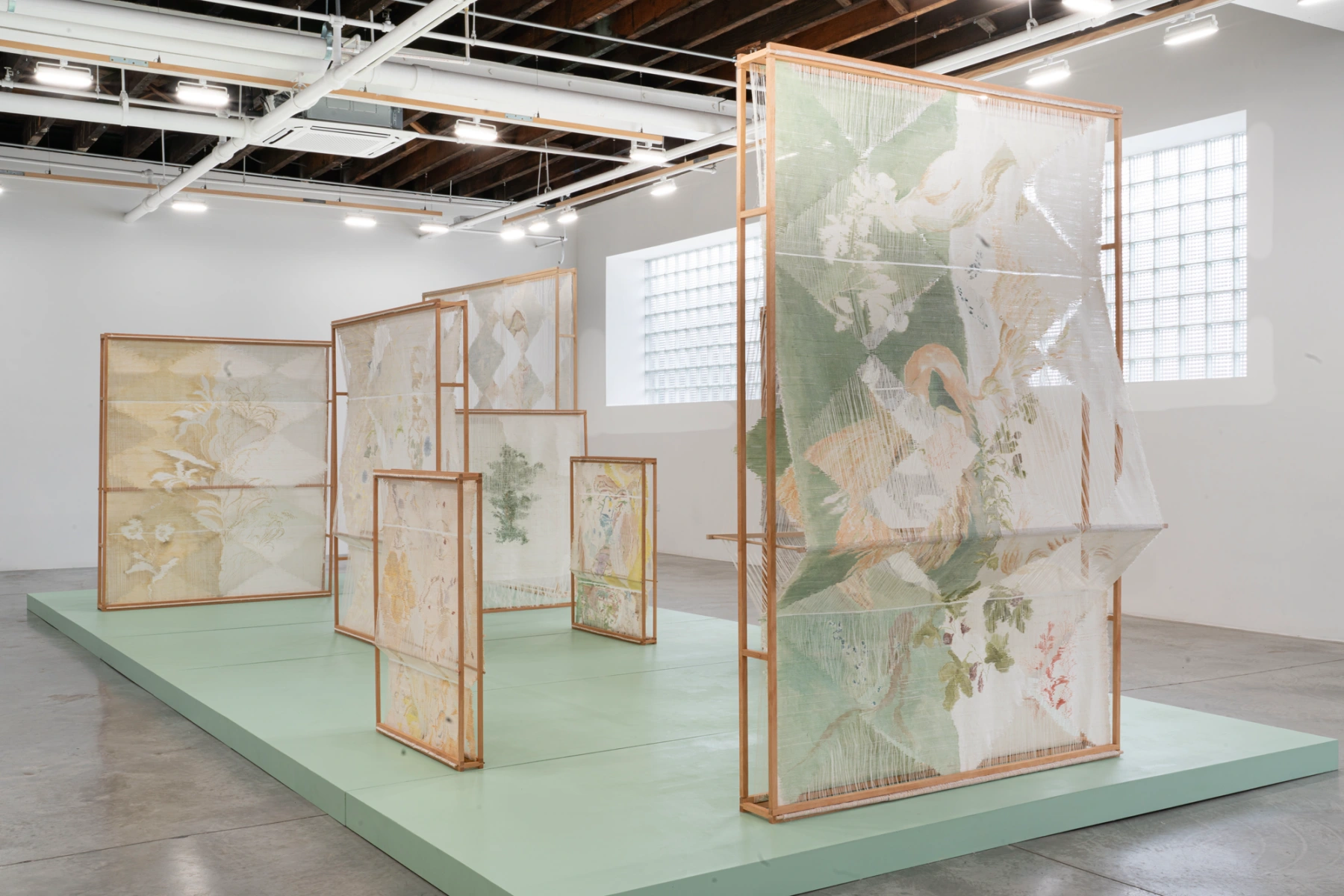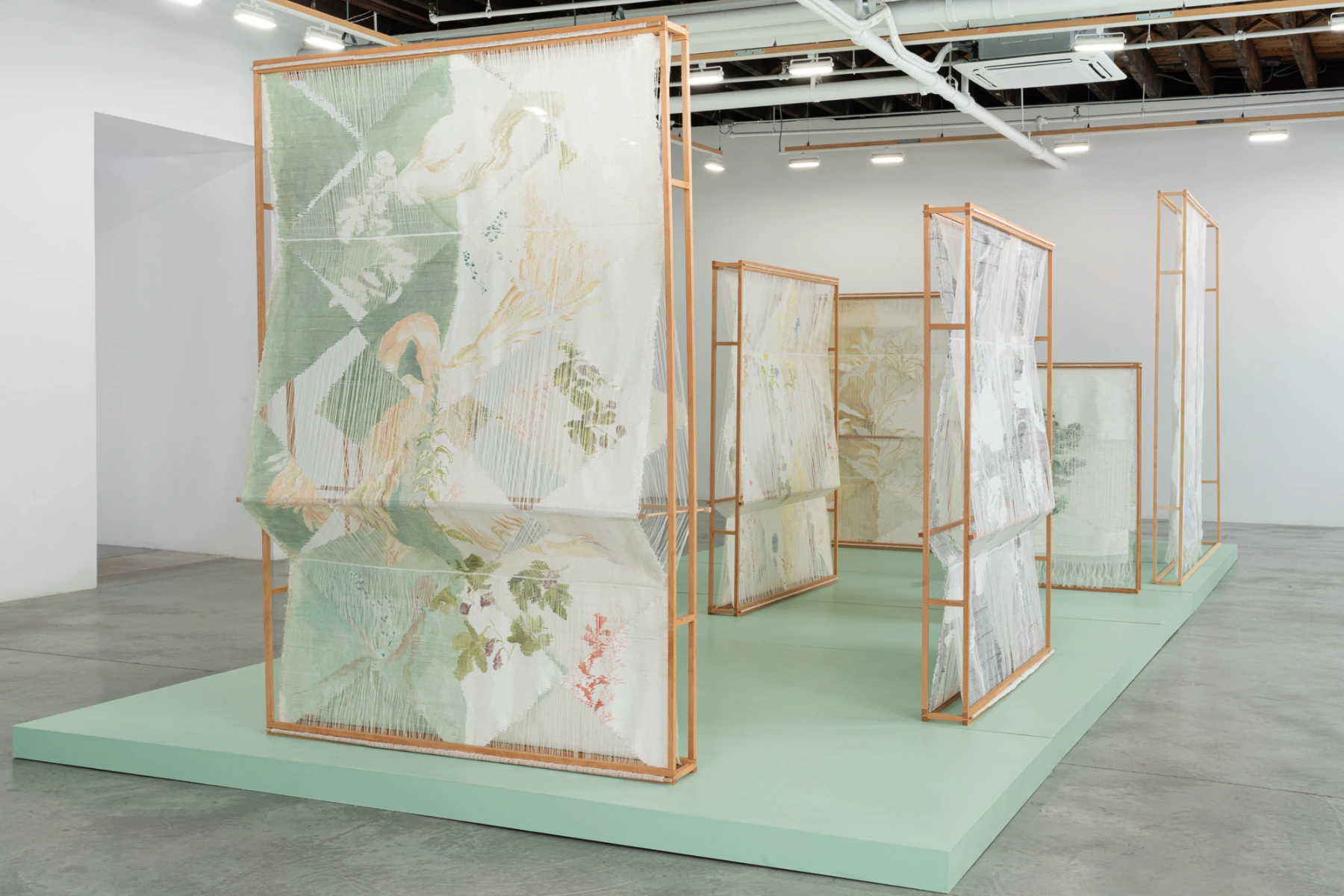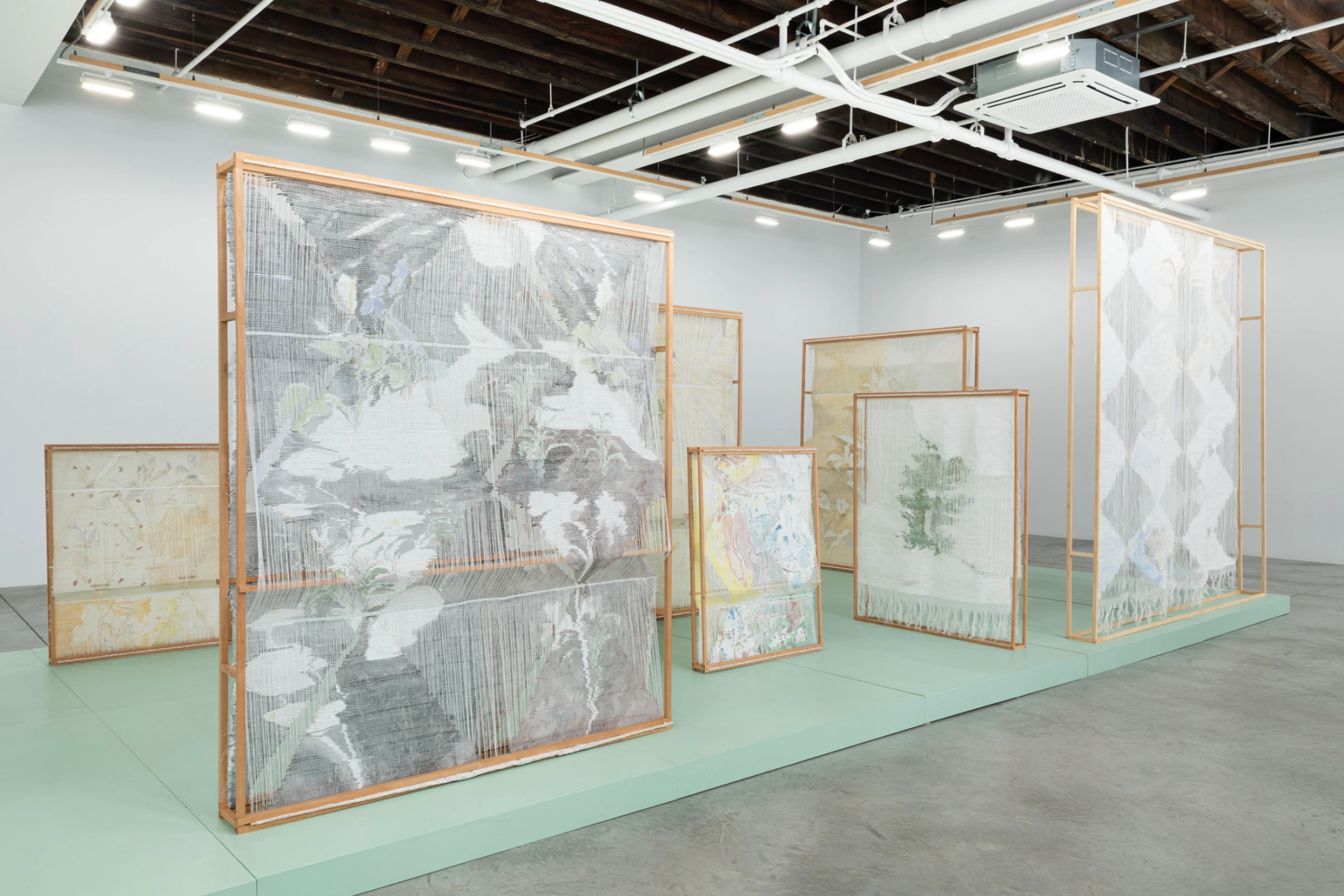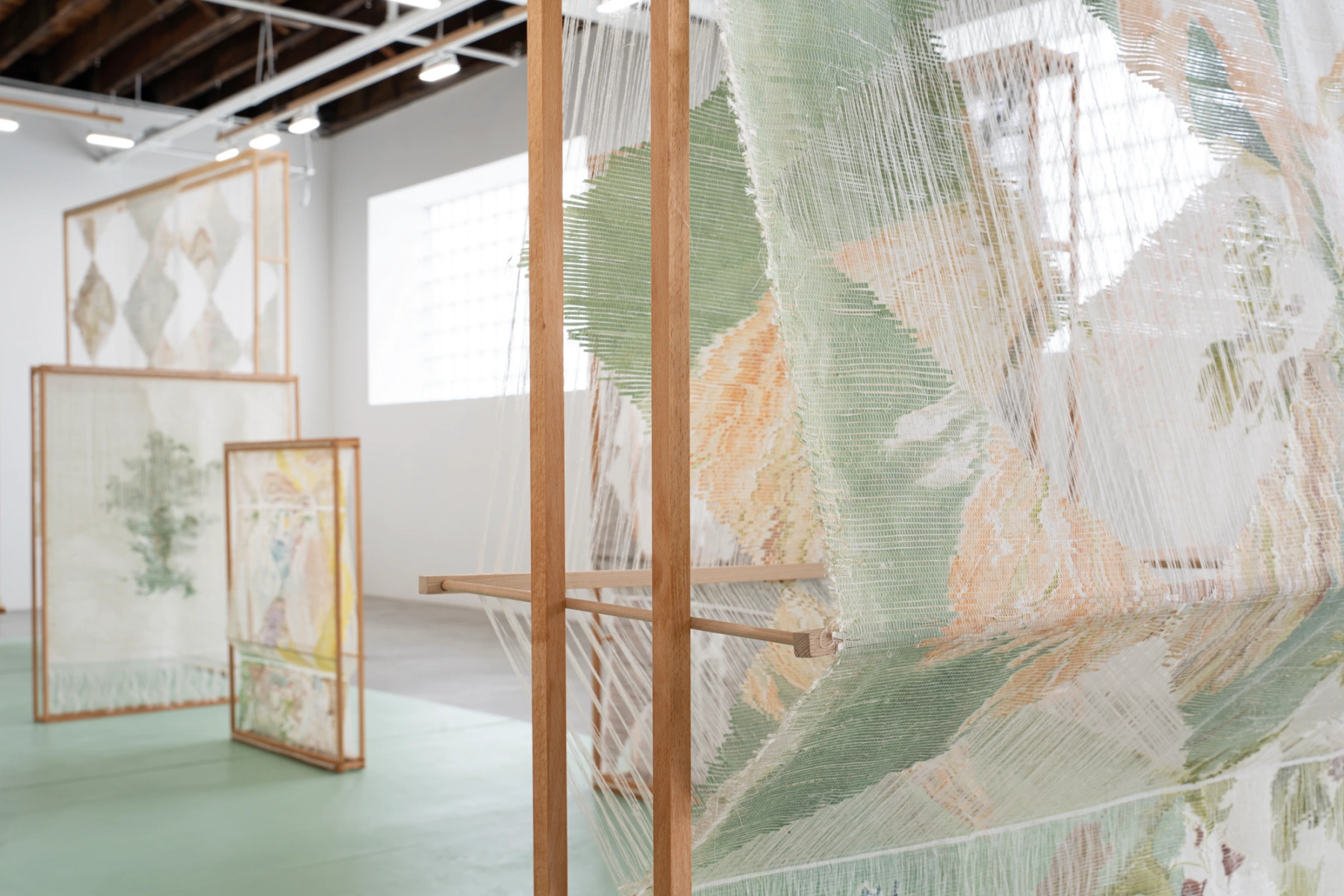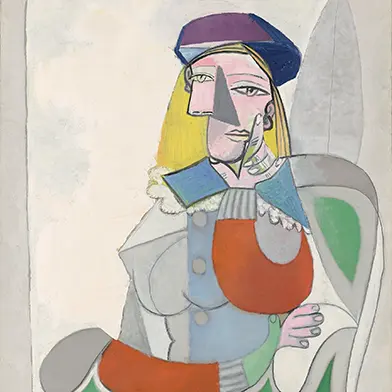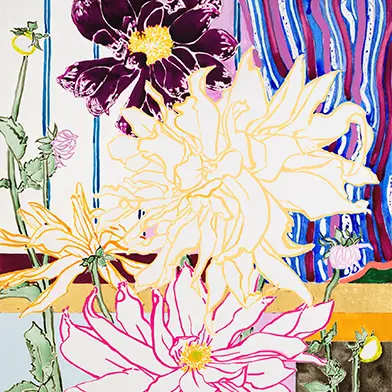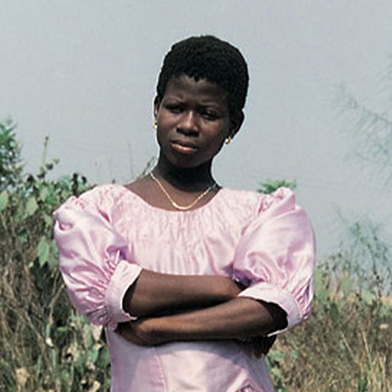Open: Thu-Sat 12-6pm & by appointment
112 Waterbury Street, Brooklyn, NY 11206, New York, United States
Open: Thu-Sat 12-6pm & by appointment
Visit
Élise Peroi: For Thirsting Flowers
CARVALHO PARK, New York
Tue 8 Apr 2025 to Fri 23 May 2025
112 Waterbury Street, Brooklyn, NY 11206 Élise Peroi: For Thirsting Flowers
Thu-Sat 12-6pm & by appointment
Artist: Élise Peroi
CARVALHO PARK presents the first United States exhibition of French artist, Élise Peroi. Her debut New York solo, For Thirsting Flowers, features eight standing wooden structures, encasing her delicate tapestries.
A series of screens emit a soft light like windows facing the sun at dawn. Nothing definite can be glimpsed, just a suggestion of the pastoral: an efflorescence of petals, stems and leaves, floating biomorphic forms. The luminosity of Peroi’s woven paintings is such that we might feel ourselves carried outside to watch the sky brighten, the air soft against our skin. As you move around these structures, free-standing to enable this three-dimensional view, unwoven warp threads let light and air through. These segments, comprised of thin fibrous filaments, have the appearance of gills, as though to allow the textiles to breath. Peroi’s fiber works together constitute an installation that situates the viewer around a shifting, porous set of frames that intermingle interior and exterior.
These structures resemble architectural thresholds, window embrasures and doorways that stand in ambiguous relation to each other without the solid walls that typically enfold them. Peroi’s use of architectural imagery suggests she is not so much interested in containment — what the house tends to both enable literally for those who inhabit it and to figure in the cultural imagination — as she is in emptiness, a preoccupation that chimes with certain strands of Buddhist thought. ‘Form does not differ from emptiness nor emptiness from form,’ theorist Eve Kosofsky Sedgwick writes, quoting the Heart Sutra. Sedgwick goes on to discuss how dynamic and living emptiness is in Buddhist thought, a quality that resonates with Peroi’s sculptural textile pieces. The screens are arranged to suggest interrelation, a dialogue energetically conducted through the play of each screen’s empty space; between fabric and frame, a gap opens through which a sliver of another screen is visible.
Peroi produces an emptiness — or rather a shaped, textured emptiness — in the images created by the painted woven silk. Comprised of a chain of diamond forms, Région de passage I and Région de passage II, construct a pattern of subtle recesses whose emptiness is made more visible through proximity to abstract floral forms that run up the centre of the compositions. In Faire pont vers le ciel, the vastness of the sky — a signature motif of void — is conveyed through an expanse of pale, silvery silk, the green thread at its heart like cirrus. In otherwise plain threaded units, exposure of the warp gives a sense of gravity, as though its pull has been given a concrete visual correlative.
In Peroi’s work emptiness never excludes abundance; instead, there is a generative mutuality between these states. What is remarkable is how much diversity of line, texture, and color can still express and embody emptiness. Peroi’s surfaces oscillate with lines of thread, their distinctive texture producing a lively background onto which the painted image sits. In Métamorphose, opaquely woven units are interspersed with those identical in form, but so sparsely woven that the surrounding room can be seen through the delicate cascade of threads. La lune uses patches of luminous white thread against a dark ground to evoke moonlight; Le Soleil is its inverse, with white thread illuminating brightly hued floral shapes that appear as if seen through the sun’s glare.
Architecture is certainly on Peroi’s mind. However, the rectangular dimensions of the textiles are those imposed by the loom, as her wooden structures’ vertical orientation remind us of their origin. In Songes II, Peroi makes the reference even more explicit with a frame that juts out horizontally like the beam of a large loom. Architecture and craft historically possessed different statuses because of their associations with gender and intellectual authority. The built environment was part of the public realm, a stage for finance and politics imagined and inhabited by men. Craft, because of its frequent embeddedness within domesticity in practices like embroidery, needlework and weaving, has traditionally been associated with women and as such has been excluded from histories of fine art. Peroi’s monumental structures align architecture and textiles, a reminder of their common etymology (teks), and in doing so she challenges a patriarchal aesthetic value system that has insisted on their separateness as disciplines.
Peroi keeps the loom within the frame and through it we might glimpse her hand at work. The madeness of the fabrics, the intricacies of the process that forged them, is one of Peroi’s central preoccupations. Peroi paints loose, expressive floral motifs directly onto silk. The canvas is then cut into thin strips that will eventually be woven back together. Slowly, through a delicate choreography of tool and gesture, through repetition and endurance, the painting is recomposed with new orientations, planes and patterns. The effect is partly one of defamiliarization. Flowers are broken apart and dispersed across the composition, becoming sinuous abstract forms. But more than anything this technique opens a space for a formal self-reflexivity. Demanding patience, slowness and a meditative attention, Peroi’s methods recall the philosophy of Simone Weil. In Gravity and Grace, Weil writes: ‘we do not have to understand new things, but by dint of patience, effort and method to come to understand with our whole self the truths which are evident.’ Like Weil, Peroi is not interested in revelation, but rather in uncovering something fundamental about how art is conceived. The doing and making of an artwork, all the physical, intellectual and emotional acts that feed into its gestation, tend to disappear once it is finished. A traditional oil-painting, for instance, contrives to conceal all its preparatory work. But it is precisely this essence, this vital sense of materiality and process, that Peroi spotlights in her textile sculptures. Peroi explains that she is interested in ‘what comes before,’ the ‘bud’ of the artwork in the studio.
Peroi’s titles reflect her interest in the liminal space of creativity. Région de passage refers to a connecting way through which people might travel, a journey rather than a destination, preparation rather than product. A similar emphasis is discernible in Faire pont vers le ciel, which translates as building a bridge to the sky. Métamorphose only titles one work, but all of Peroi’s fabric sculptures are arrested in the state it describes: that of transformation, metamorphosis — the final state unclear.
Exhibition text by Dr. Rebecca Birrell
